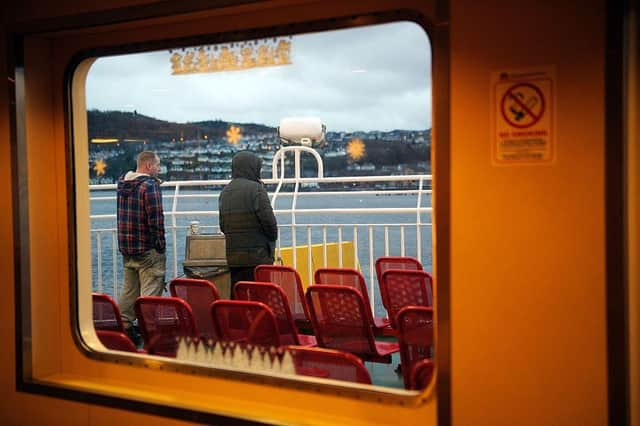Transport Scotland plan to “manage decline”


In a response to consultation on the plan, the Comhairle repeatedly accuses Transport Scotland – a wing of the Scottish Government – of reducing capacity on ferry routes rather than planning for future demand.
The criticism comes at a critical time when SNP Ministers must decide whether to entrench Transport Scotland’s dominant role in future governance of ferry services under the new CalMac contract; an option widely opposed in the islands.
Advertisement
Hide AdAdvertisement
Hide AdIn a report to the Comhairle’s Transportation Committee, chief executive Malcolm Burr wrote: “The draft Islands Connectivity Plan seems to be focused on managing the decline of island ferry services by seeking to reduce capacity rather than supporting growth through increased capacity”.
It continues: “Visitor numbers to the islands are growing year on year and renewable energy developments over the next ten years will bring demand for thousands of additional vehicle and passenger movements”.
The Comhairle submission to the consultation argues that there is an obligation to take account not only of existing demand but also “potential demand – passengers turned away” and “invisible demand” meaning people “who don’t even bother trying to book because they are aware of the state of the ferry network generally”.
Economic studies, says the Comhairle, have shown both these categories represent many millions of pounds lost to the islands due to the state of the CalMac fleet while the Islands Connectivity Plan fails to recognise them in planning future capacity.
Advertisement
Hide AdAdvertisement
Hide AdThe submission suggests Transport Scotland is using environmental justifications for a “drive to reduce vehicle numbers on ferries” which is actually “due to lack of deck space on ageing vessels”.
Arguing this “will not enable connectivity and growth in an area where there is high reliance on the private car”, the Comhairle suggests that, rather than environmental, this should be treated as an “islands proofing issue” and that islanders “should not be disadvantaged compared to their mainland counterparts” where the same “reduced capacity” approach is not being applied to other modes of public transport.
Accessibility to islands is already difficult enough, the Comhairle submission argues, and “Transport Scotland should not be seeking to compound these difficulties by providing under-capacity ferries”.
Proposing that “sustaining population” should be included in the Plan as a priority objective, the Comhairle argues that the “staggering socio-economic impacts” of ferry failures “are simply ignored by Transport Scotland and ferry operators”.
Advertisement
Hide AdAdvertisement
Hide AdTurning to the controversial booking system introduced by CalMac, the Comhairle submission criticises the “lack of intermodal integration of ticketing systems” which suggests that “the operator’s needs appear to have been prioritised over customers’ needs”.